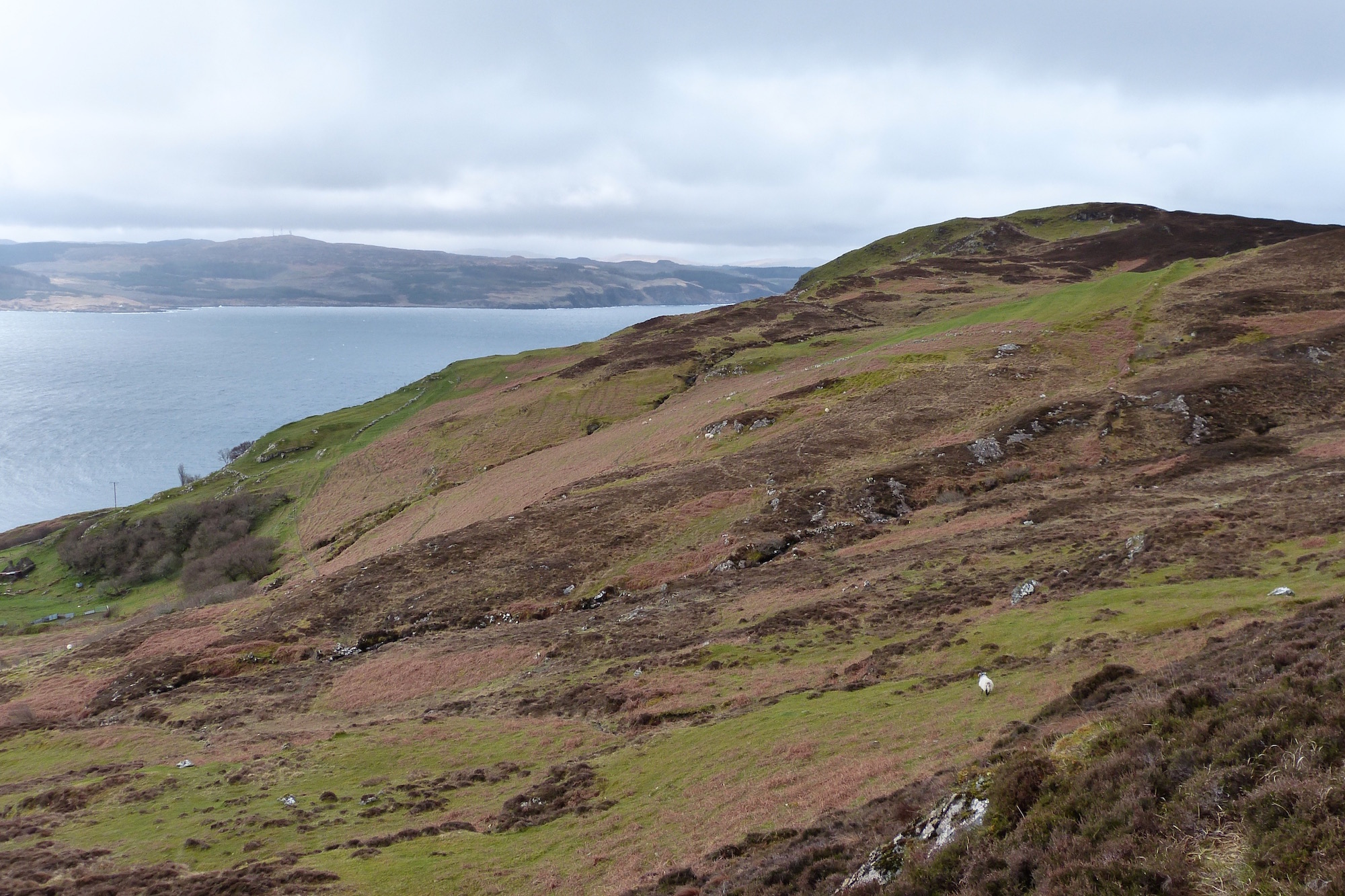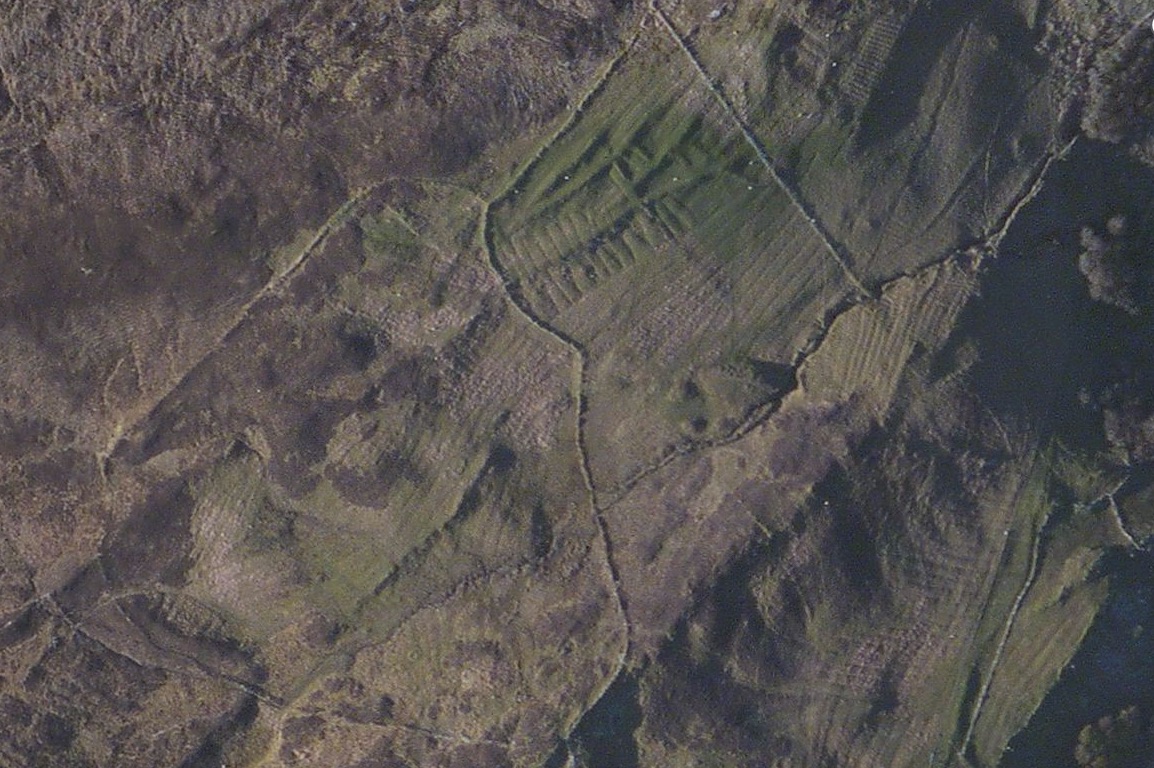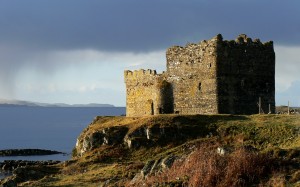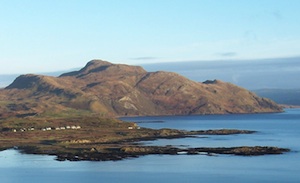Past Populations
This picture was taken from the common grazings at the back of the crofting township of Ormsaigbeg, looking southwest towards a low hill called Maol Buidhe, with the Sound of Mull beyond. At this time of year, before the bracken has grown up, the characteristic stripes of lazy beds can just be seen, evidence of past arable workings.
We know from historical maps that this area was extensively worked early in the 18th century, but had fallen out of use by the beginning of the 19th. It’s evidence that the peninsula once supported a much larger population, but how much bigger….
….is suggested by this satellite photo of the same area, where the extent of the workings becomes clearer. What is fascinating is the variety of types of beds – in some places, such as the bottom right of the picture, different generations of beds run across each other – showing that this area has been worked for many hundreds of years.
Ormsaigbeg – the name has Norse derivations – certainly existed in MacIain times, and it is evidence like this which explains why, in their time, the MacIains were able to raise considerable numbers of men to fight in local conflicts.






Three years ago I was planning a trip to Scotland with my wife and youngest red haired daughter. (I have two red haired daughters and two red haired sons) I had read that my McKean forebearers had a connection to Ardnamurchan, but I’d never learned anything more than that. I had exhausted the term “McKean” in my internet searches. As I was planning our itinerary leaving Scotland and heading south to England I gave one last try to learn more about the family origins. I remembered that I had long ago seen an original spelling of the name as MacIain. I ran a search for that spelling and found this website. With the information I learned from your website, I scheduled two days exploring the area. We stayed at a B&B at Kilchoan. We explored the church and cemetery. (No MacIain gravestones or MacDonalds either if I recall right. I looked at them all.) Had the MacIains been evicted from the Island after their fatefull rebellion against the Campbells? My known ancestor lived in Argylshire but was only identified as “of Ardnamurchan”. Apparently some changed the name to McKean after the failed rebellion. My McKean forebearer was a Covenanter and fled Scotland to Antrim, Ireland during the Killing Times of Charles II. His grandson was a signer of the American Declaration of Independence and was elected president of the Continental Congress upon independence. (He was the first President of the United States) So the hardships and troubles endured by all Scots, but directly by MacIains / McKeans became the history which forged the principles of liberty which the American founders fought so hard to establish and to preserve. Being an attorney and a history buff, I couldn’t help but see the historical context of what we saw in Scotland. Thank you for your work on creating this website. It has filled a large void in my knowledge of the family history. John “Luke” McKean